5 Major Ports In Guatemala
The Republic of Guatemala is the most populated country in Central America. It borders Mexico, Belize, the Caribbean, Honduras, El Salvador and also the Pacific ocean.
It is one of the poorest countries in Latin America however its ports act as a major source of revenue for the country by promoting trade as well as tourism.
Guatemala mainly exports fruits, vegetables, clothes and handicrafts. There has been an increased global demand for biofuels, so Guatemala has expanded the cultivation and export of raw materials such as sugarcane and palm oil, required for biofuel production.
In the past few years, more and more ships have been visiting Guatemalan ports and the numbers of tourists have been steadily rising. Approximately 2 million tourists visit Guatemala every year.
Guatemala is the core area, where Mayan civilization once flourished. It also witnessed Spanish colonization and later civil wars. However, its economy has grown considerably due to increased foreign investments in its shipping sector including transport and also tourism.
Let us have a look at the infrastructure of the Guatemalan ports.
There are two ports on the Atlantic coast namely Santo Tomas de Castilla and Puerto Barrios. Three ports are situated near the Pacific ocean- Puerto Quetzal, Puerto de San Jose and Champerico.
A government entity called The National Port Commission manages and operates the Guatemalan ports. It oversees the port requirements and provides technical aid, coordination and port services. This government body includes representatives from the port companies, ministers and also heads of private companies operating at the ports.
Port Quetzal and Santo Tomas de Castilla, are owned by the government and government representatives have been appointed regularly to manage port operations.
Puerto Quetzal
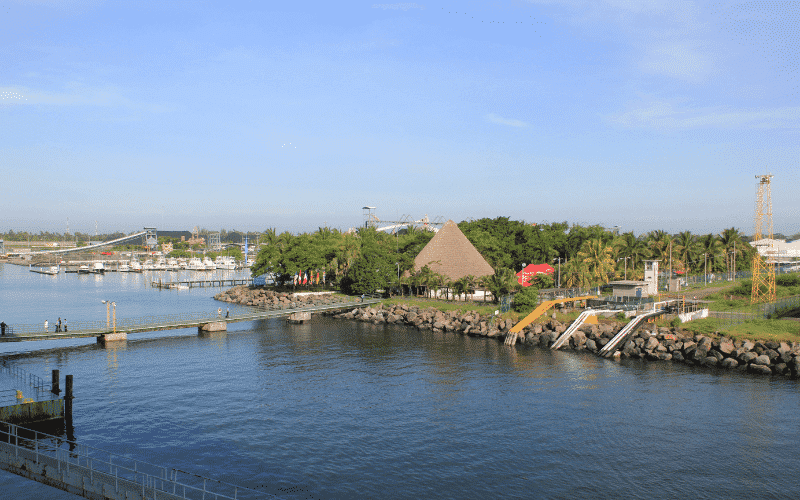
Situated on the pacific coast, Port of Quetzal is the biggest pacific seaport. Its advantageous geographical position gives it an upper hand compared to other ports in the Central American region. It is close to the Panama Canal as well as other Mexican ports. Its location makes it an important international port.
It is just 100 km away from Guatemala City, in the Escuintla district near Puerto San Jose. In the 20th century, it overcame the San Jose port in importance, by handling a majority of maritime traffic. It is also the first multi-purpose Guatemalan port in the Pacific Ocean.
The majority of sugar export is undertaken from this port and it boasts of the most efficient sugar loading terminal in the entire Central American region. Main exports from this port include sugar and coffee. The major imports are corn, soy, wheat, fertilizers and cement. Vessels need to use their cargo handling equipment.
Guatemala is also witnessing growth in its manufacturing sector. Hence, construction equipment and gin machinery enter the country through this port. The port handles around 358,000 containers annually. The port is witnessing the mechanization and construction of an additional terminal. Once this terminal becomes operational, it will be able to handle 340,000 more containers.
Presently, the port attracts construction equipment like cranes, bulldozers and trucks. These are among the most famous of the imports as they contribute to the development of Guatemala’s economy by boosting its manufacturing sector.
The port is quite expansive and has a liquefied gas terminal, a coal terminal and a cruise ship terminal. It is Guatemala’s major port but it needs further modernization and infrastructural development to cope up with global port standards and to meet the increasing global demand. It is also famous for cruise docking.
The port authority or the Empresa Portuaria Quetzal operates and administers the port functions. The harbour of this port is sheltered by breakwaters. The main dock is near the eastern side of the harbour and is 1,140 meters long.
Main Terminal
The port can handle huge vessels and is operational all year. The commercial dock has four berths. Its main berth is 820 meters long and can accommodate ships with 11 meters draft. It handles general cargo. The other two berths handle both solid and liquid cargo and it also has a multipurpose ramp, plus a 203 m long container berth and three berthing tugs.
Grain Handling
The grain terminal is situated in Zone 1 and spans 39,800 m². The terminal has six silos with a storage capacity of 3,880 tonnes. It also has a warehouse with a capacity of 10,000 tonnes. The terminal has treadmills for loading and unloading grains. They can handle different products together.
Main Storage Terminal
The Compania Bananera Independiente Guatemala – COBIGUA owns warehouses for storing dry and refrigerated cargo. The warehouse for refrigerated cargo spans 10,620 m² with a capacity of 4,115 tonnes. It is said to be the biggest refrigerated cargo warehouse in Latin America. The warehouse for dry cargo is spread across 10,500 m² and it receives, stores and ships general cargo and cargo packed in containers.
The port can take up to four ships at a time. It handled around 322,690 TEU’s of container traffic in 2013. Port equipment includes 6 dockside cranes, 14 reach stackers of 40 tonnes each, and 50 forklifts.
The port is quite safe with fixed cameras installed in all the areas. There is an Access Control System with digital fingerprints, biometric readers and mechanised vehicle barriers. It also has a maritime surveillance system and trained staff which performs regular port inspections. All this has led to greater port productivity.
Port of Santo Tomas De Castilla
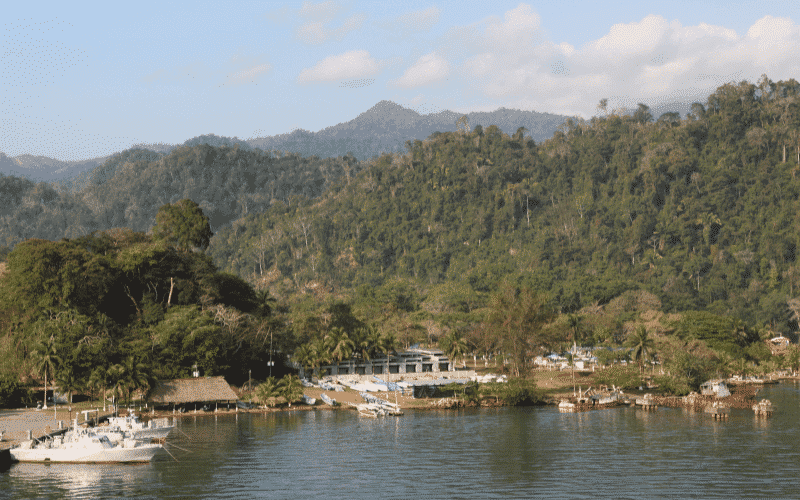
The Port of Santo Tomas de Castilla has been operational since 1955. It is at a distance of 295 km from the capital city. It handles dry cargo such as grains and fertilizers, cruise ships, tankers, reefers, liquid bulk and also containerised goods.
The port is divided into six zones or areas namely – the Cruise Terminal, Costumes Warehouse, Container terminal, Liquid bulk terminal, solid bulk terminal and industrial park.
It can accommodate vessels with a length of 230 m and 10 m draft. Smaller vessels can enter the interior dock. The deep-water shore is well-protected and doesn’t experience strong winds or high currents.
The port’s advantageous geographical location saves it from the effects of tsunamis and hurricanes and also winds coming from the Caribbean sea. It is also close to Miami and Florida. The port is situated near a free trade zone which is also called Zolic.
In 2013, Puerto Santo Tomas de Castilla handled 29% of the total cargo, witnessing an increase of 8.3% from the previous year. Since then the port has seen increased cargo traffic.
The port is well equipped with 6 conventional berths, 4 berthing tugs and has six silos, located in its grain terminal which extends over 39,800m². The capacity of the silos is around 3,880 tonnes and the warehouse capacity is around 11,000 tonnes. The system uses treadmills for loading and unloading grain.
The first two berths handle passengers whereas the other berths handle conventional or general cargo, military vessels and also community service ships carrying humanitarian aid.
The port equipment is owned by private companies but managed by the port authority. It has 4 mobile cranes, 14 reach stackers, 14 transtainers and also 39 forklifts.
The port offers ample storage space for containers including reefers and dry cargo. It also has space for vehicles, space for opening, re-filling, and transhipment cargo of vessels that cannot be stored for a long time. There is a ramp for customs inspection and a separate area for inspection of the loaded trucks and tankers.
Port Barrios
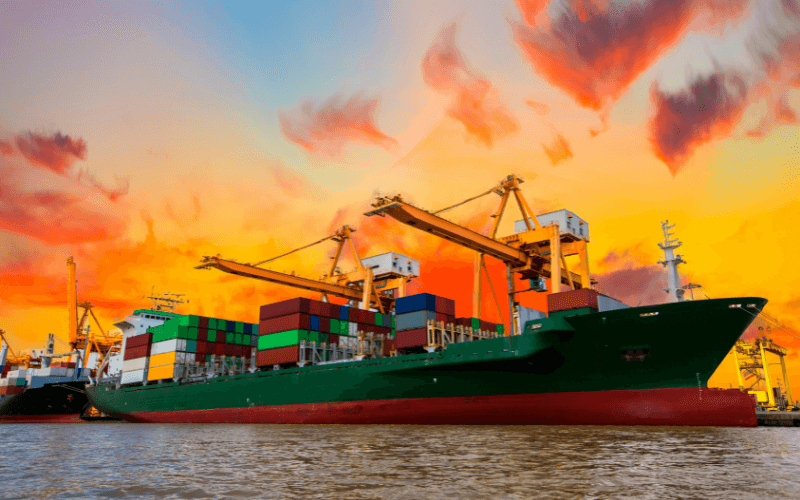
Port Barrios is situated on the Guatemalan coastline facing the Atlantic ocean. It was the major Atlantic port till 1976 when an earthquake damaged the nearby town and the port of Santo Tomas de Castilla was constructed to handle the operations in the region.
After this incident, it was reconstructed as a modern industrial port. It was initially constructed by the United Fruit Company and is around 295 km away from Guatemala city.
It was being built to serve as a railroad terminal to link Guatemala with American trade routes. However, presently it is a hub for exporting fruits and vegetables marketed by companies such as Dole, Chiquita and Del Monte.
The port can be assessed through the Santo Tomas de Castilla port access channel. It utilises Amatique Bay as its anchor space and is privately managed by Cobigua Company.
The port’s concrete pier deals with containerized cargo, general cargo, liquid bulk and dry cargo. It can accommodate cruise ships, containers, tankers, barges and general cargo vessels. The pier is situated on the western side and has four berths.
The port has storage space for containers including dry and refrigerated goods and also space for vehicles. The port capacity is around 2,440 TEU’s. The port doesn’t have storage space for bulk cargo and so grains have to be directly loaded onto the trucks.
The port has indoor space for opening containers for Customs revision. It also has a parking lot for trucks undergoing customs inspection. It has three container storage spaces for goods that are exported. These storage spaces are outside the main port area, and two of them are used majorly by DOLE Group and the other by COBIGUA.
The port has four berths and the port equipment includes 3 mobile cranes, 10 reach stackers, and 3 forklifts. The port has grain handling equipment but no bagging equipment. However, there is no area for storing dry cargo.
In 2014, the port was expanded which increased its handling capacity by 39%. The dock size was increased by 23.8 m and is around 300 m long. The port can now receive vessels weighing 240 metric tonnes. The port also received three new shore cranes. It is a small port but functions quite efficiently. The waiting time is less than 5 hours for vessels if they are a part of the port’s weekly program.
Port of Boyas De San Jose
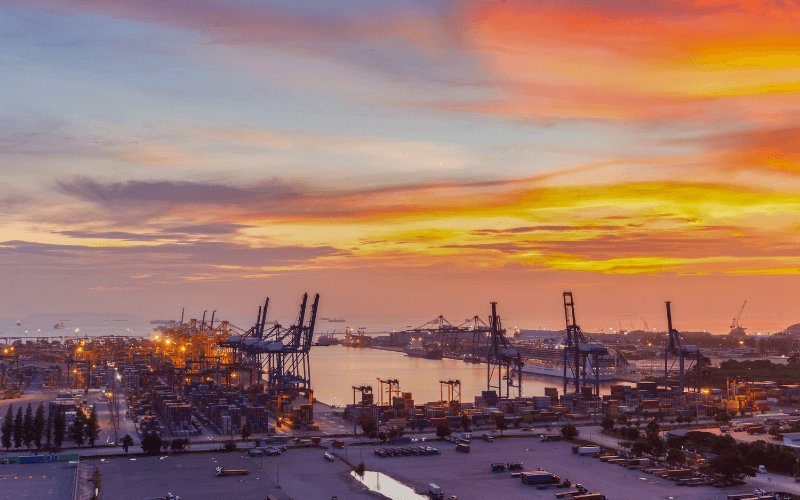
Situated on the pacific coast, Port San Jose was opened in 1853 and is now used as a liquid bulk terminal. In 2013, it received 136 ships carrying 1.788 million tones of liquid cargo, majorly imports. This port has a dock measuring 150 meters but it is not operational.
It has an off-shore terminal as it is a very small port. It can handle ships up to 160 meters long. The water depth of its oil terminal is around 13.7 meters and the anchorage depth is around 21.3 meters.
This port handles both cargo and also tourists. Incoming vessels have to anchor 1 mile offshore. It was Guatemala’s primary pacific port till the late 90’s when it was overtaken by Puerto Quetzal. San Jose Port still handles the export of various commodities such as molasses, cotton, coffee, lumber, sugar and honey. It also has tourist attractions like Iztapa resort which was once a Spanish fort. San Jose is also connected to Escuintla and also Guatemala city by roads and railways.
Port of Champerico

Port of Champerico is in the southwestern part of Guatemala, on its Pacific coastline. It is near the town of Retalhuleu and is one of the most important ports in the country.
Incoming ships have to anchor 1 mile offshore. It mainly deals with the export of coffee, sugar and timber. Guatemalan shrimp fleet also operates from this port.
Its anchorage depth is around 12.2 meters and its cargo pier depth is 6.1 meters. It is a very small port and is only 500 feet long. It operates as a feeder port.
Thus, Guatemalan ports are the drivers of its economy. Through continuous government intervention and foreign investment, the port facilities and equipment has improved over the years, making Guatemalan ports one of the most flourishing ports in the region. The revenue from import-export trade is crucial for the overall development of the country.
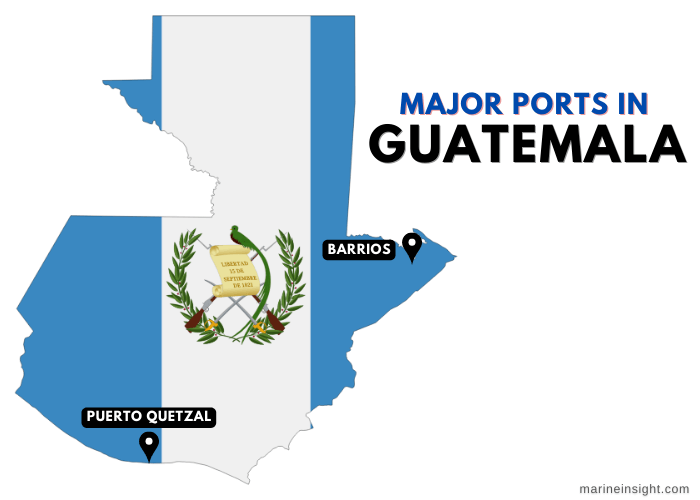
You may also like to read:
- 6 Major Ports in Ghana
- 9 Major Ports in Kenya
- 5 Major Ports In Switzerland
- Major Ports of Gambia
- 10 Major Ports in Romania
Disclaimer :
The information contained in this website is for general information purposes only. While we endeavour to keep the information up to date and correct, we make no representations or warranties of any kind, express or implied, about the completeness, accuracy, reliability, suitability or availability with respect to the website or the information, products, services, or related graphics contained on the website for any purpose. Any reliance you place on such information is therefore strictly at your own risk.
In no event will we be liable for any loss or damage including without limitation, indirect or consequential loss or damage, or any loss or damage whatsoever arising from loss of data or profits arising out of, or in connection with, the use of this website.
Do you have info to share with us ? Suggest a correction
Disclaimer :
The information contained in this website is for general information purposes only. While we endeavour to keep the information up to date and correct, we make no representations or warranties of any kind, express or implied, about the completeness, accuracy, reliability, suitability or availability with respect to the website or the information, products, services, or related graphics contained on the website for any purpose. Any reliance you place on such information is therefore strictly at your own risk.
In no event will we be liable for any loss or damage including without limitation, indirect or consequential loss or damage, or any loss or damage whatsoever arising from loss of data or profits arising out of, or in connection with, the use of this website.
Latest Maritime Knowledge Articles You Would Like:
Subscribe To Our Newsletters
By subscribing, you agree to our Privacy Policy and may receive occasional deal communications; you can unsubscribe anytime.















